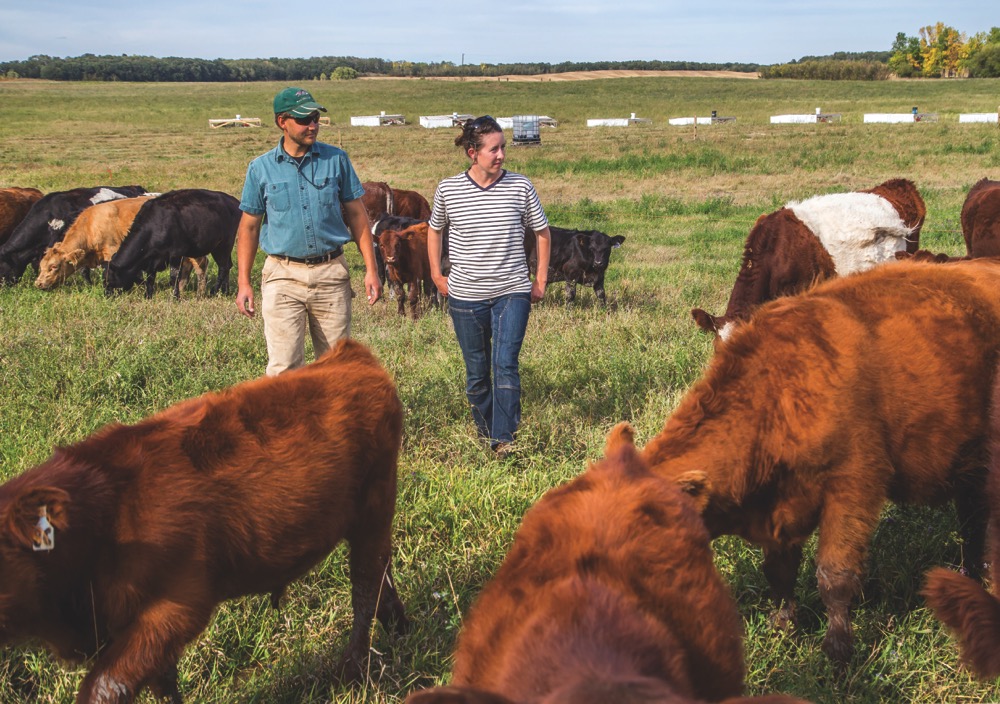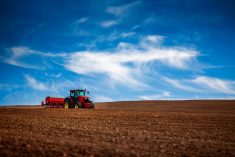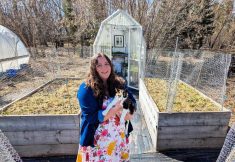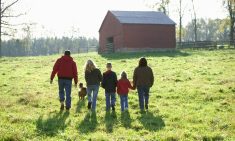Agriculture has always attracted all kinds, including from the fringe. There have been the hippie back-to-earthers of the 1960s and even the New Agers of just a decade ago, all of them dreaming of an escape from the confines of city life partly so they can commune with nature on a handful of acres with a hoe in their hand.
Make no mistake, they’re still coming. But now, maybe there’s something different going on, with new farmers and a very different money sense.
With partner Wian Prinsloo, Lydia Carpenter operates Luna Field Farm near Dunrea in southwestern Manitoba, and they fit the mould of today’s new farmers perfectly. Recent surveys have found an uptick in new farmers who don’t have any background in farming, and Carpenter and Prinsloo are both from Winnipeg. Neither grew up on a farm.
Read Also

Farmland values: assumptions and realities
Where farmland values are headed and what decisions farmers should make
Carpenter and Prinsloo have been farming here for the past four years, raising pastured pork, sheep, poultry and beef on a half section of rented pasture, and direct marketing their grass-fed meat products to customers in Winnipeg, Brandon and surrounding areas.
They’ve also been creating a kind of template that others will likely follow, they believe. “The next generation of people entering into agriculture, they’re really going to have to do this because they’re not going to be able to cash flow any other type of operation,” Winsloo says. “I’m optimistic that this type of farming pays, so if people can discover that for themselves, then more people will do it.”
Carpenter studied environmental science and geography at the University of Winnipeg, earning a master’s degree in natural resource management. During her studies she became fascinated with systems ecology, rural livelihoods, and food. After meeting Prinsloo, she decided she wanted to farm and put some of her ideas and theories to practical use.
By the time Carpenter met Prinsloo — who grew up in South Africa and moved to Winnipeg at 15 — he’d spent years learning about farming by working on different farms that he felt would give him the skills he needed. Through those years, he’d also either begged or rented a small patch of land wherever he went to raise pastured poultry which he sold to a growing customer base in Winnipeg.
Carpenter and Prinsloo see their urban upbringing as more of a benefit than an impediment. “Our naiveté and an absence of farm family pressures allows us to ask questions and try new things,” says Carpenter, who adds that mentors — rather than a traditional agricultural education — have been hugely important in helping them learn to farm. “We have sought out people who we respect for the work they’re doing, and there are lots of individuals in our community that we go to with questions.”
The couple’s philosophy is that they don’t need to own the land they farm on, just manage it. But the challenge is to have a secure land tenure agreement that allows them to farm the way they want to long term.
Secure land tenure agreements
“We were farming 80 acres about five miles from here, but we weren’t sure of our land tenure position, so we were trying to think of other options and we realized that working with somebody who shared our vision was going to be important, because they could understand how we’re trying to manage the land,” says Carpenter.
Then they ran into local farmer, Dave McNish, a holistic management practitioner who, along with his son, owns the land and yard site they now rent, and who was actively looking for someone to mentor.
McNish had posted a letter in a newsletter a few years earlier offering an opportunity to work and learn alongside him on his farm. Prinsloo recalled seeing the letter and contacted him to see if he was still looking for someone. He was.
The couple has a rolling, three-year-lease term with McNish that renews every year. “We always know we’ve got three years,” says Prinsloo. “Ideally we would own some of the land we operate on so we could have a stable, long-term base on which to build our home, and from which we could expand our operation. Land is very expensive for those who want to start farming. For now, we can continue to operate and expand on leased land and will manage the land as if it were our own.”
The couple has realized their first goal of being able to farm full time. Carpenter gave up her job teaching English as an Additional Language in Brandon when they moved to their current site, and the only off-farm work Prinsloo takes is casual work as a crop insurance adjuster.
Despite misgivings about losing a steady off-farm income stream, they are not only making a living but also getting a lot of satisfaction from farming.
“We like managing our own business and working for ourselves, and because we feed people there’s a lot of meaning around our everyday work,” says Carpenter. “Farming allows Wian and I to work together, problem solve, learn from others, learn from our environment, and provide our community with healthy food. We’re challenged every day to make decisions that impact how we care for land, animals, family and friends.”
Creating a cash flow stream
A common challenge for new farmers is that their lack of an asset base means they don’t have security to borrow money from traditional banks and credit unions. Thus they have to find new and creative ways to finance and cash flow their operations.
“We’ve developed some creative ways of creating cash flow for the business,” says Carpenter. Importantly, those include a focus on direct marketing and diversifying into enterprises such as grass-fed lamb and beef and pasture-raised pigs and poultry.
“Our customers cash flow parts of the business. There are certain things on the farm that we can take prepayment for, like eggs for example, where we provide a regular delivery and people pay six months in advance,” says Carpenter. “The reason we don’t do farmers’ markets is because, instead of standing at a stall for hours, our time is far better spent responding to customers who contact us by phone or email. I can let them know what we have, and we know that when we deliver a load of food it’s all spoken for.”
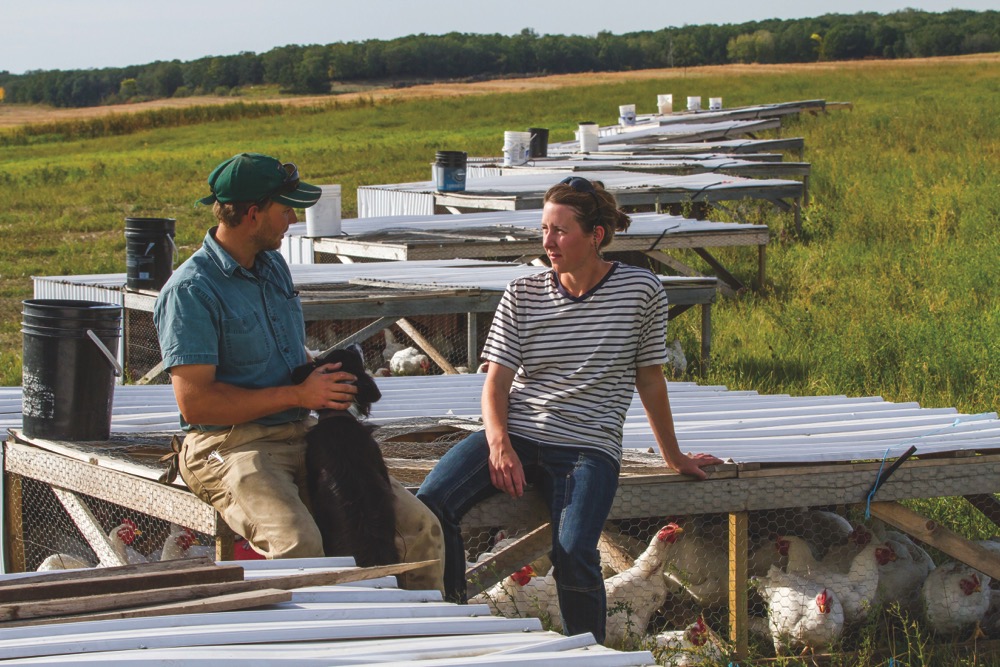
They’ve had to borrow money from time to time and that’s often come through non-traditional lenders. “We’ve had private lenders give us small, interest-free loans, and often it’s been other farmers,” says Carpenter. “Some people have also cash flowed us through accepting payment later on things or working out payment plans.”
The couple has been savvy in their marketing approach, which was building slowly through word of mouth, but then snowballed after Carpenter took over the marketing side in 2009 and began to employ social media such as a website and Facebook, which adds efficiency to direct marketing.
They’ve even begun to work with traditional lenders. “We had a loan out with Manitoba Agricultural Services Corporation and the person we dealt with said it was probably the smallest loan she’s given,” says Carpenter. “But for us that amount of money could generate quite a bit of cash flow because our margins are better on our value-added, direct-marketed products.”
Carpenter and Prinsloo keep their needs for cash low by having very little machinery apart from an old tractor, a couple of quads, flatbed trailer, stock trailer and a truck. “We don’t hay, and we don’t plant anything. So the cash flow requirements on depreciating assets is minimal,” says Prinsloo.
“We are investing in appreciating assets and using funds to stock the land,” he says. “That way, we’ll have something to borrow against and may be in the position to buy some land in the area.”
Essentially, they’re building equity in inventory, with the idea that they will be able to convert that equity to land equity when the opportunity arises. “The business is already in place,” Prinsloo explains. “And we can demonstrate that we’re creating cash flow from the operation through direct marketing.”
They focus on what they have, rather than what they lack, and they understand their most valuable resource is the soil. The couple is working to continually improve the land through planned, multi-species grazing. Says Carpenter, “We may be referred to as farmers but we like to think of ourselves as land managers.”
“What we try to convey to people consuming this food is that they’re paying for our management and our time,” adds Prinsloo. “Our customers are sharing the responsibility to improve the land. It’s almost like carbon credits in a sense… a lot of people understand that right away.”
As part of a vibrant food community, the couple participates in a lot of events such as the annual Growing Local Conference in Winnipeg, and they also host customer and producer tours, like summer Grazing Club tours funded by Ducks Unlimited Canada that this year attracted around 50 producers from across Manitoba to see their planned grazing system.
Focus on what they have, not lack
They are also part of the slow food movement, and Carpenter, along with 14 other Canadian youth delegates has been invited to attend a Slow Food Youth Network this fall in Italy.
Says Carpenter, “The slow food movement creates a certain level of camaraderie around the culture of food that is perhaps missing in North America, but is very strong in other parts of the world. Italy is a good example, where they can see very clearly the ramifications of moving away from the type of food culture that they have. It’s a bigger picture — it’s care for the food. The fact is that life itself should be delicious and it should include family, friendship and eating. Many of our customers are very familiar with these organizations.”
As for the future, the main goal is to continue to make a living off the farm and to continue to grow, but also to get better at the management side of their business. “We’d like to grow the cow herd but with the current prices that’s a bit of a challenge,” says Carpenter. “Right now we’re putting in some more infrastructure, maybe a pipe water system or some way to increase water-holding capacity on the land. In the next five years, I see we’ll probably take on more land for grazing. This year we had an apprentice with us through the SOIL apprenticeship program. So we could see having a few more people on the farm working with us and helping us out.”
They also believe that the rural landscape needs more new farmers doing what they are doing, and Carpenter talks of “creating an awareness of the opportunities in this type of farming.”
“This is the only way for us to farm. We could never have jumped into a grain operation and been able to have the funds and the cash flow,” Carpenter says. “We’re creating wealth out of the actual management.”



